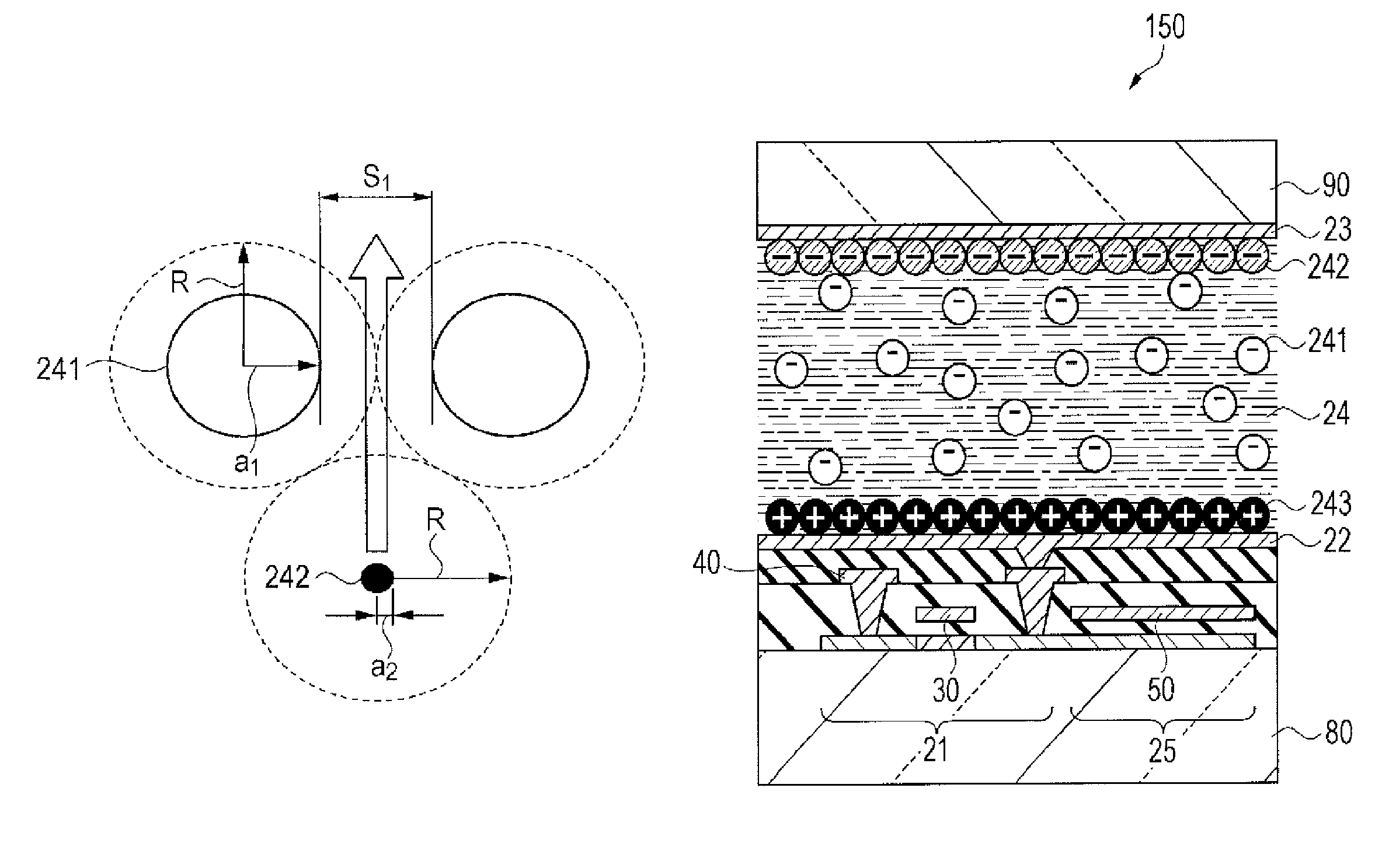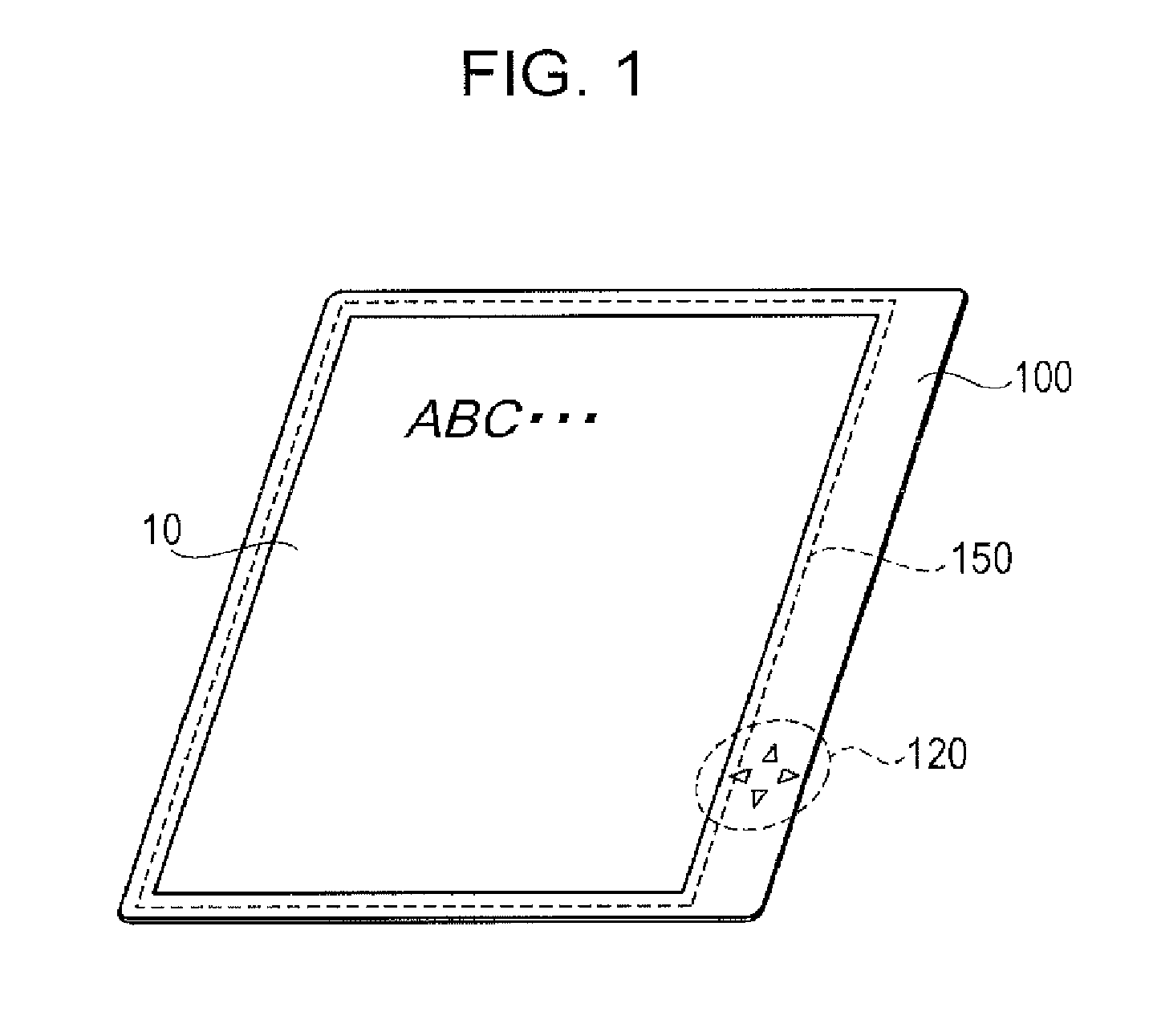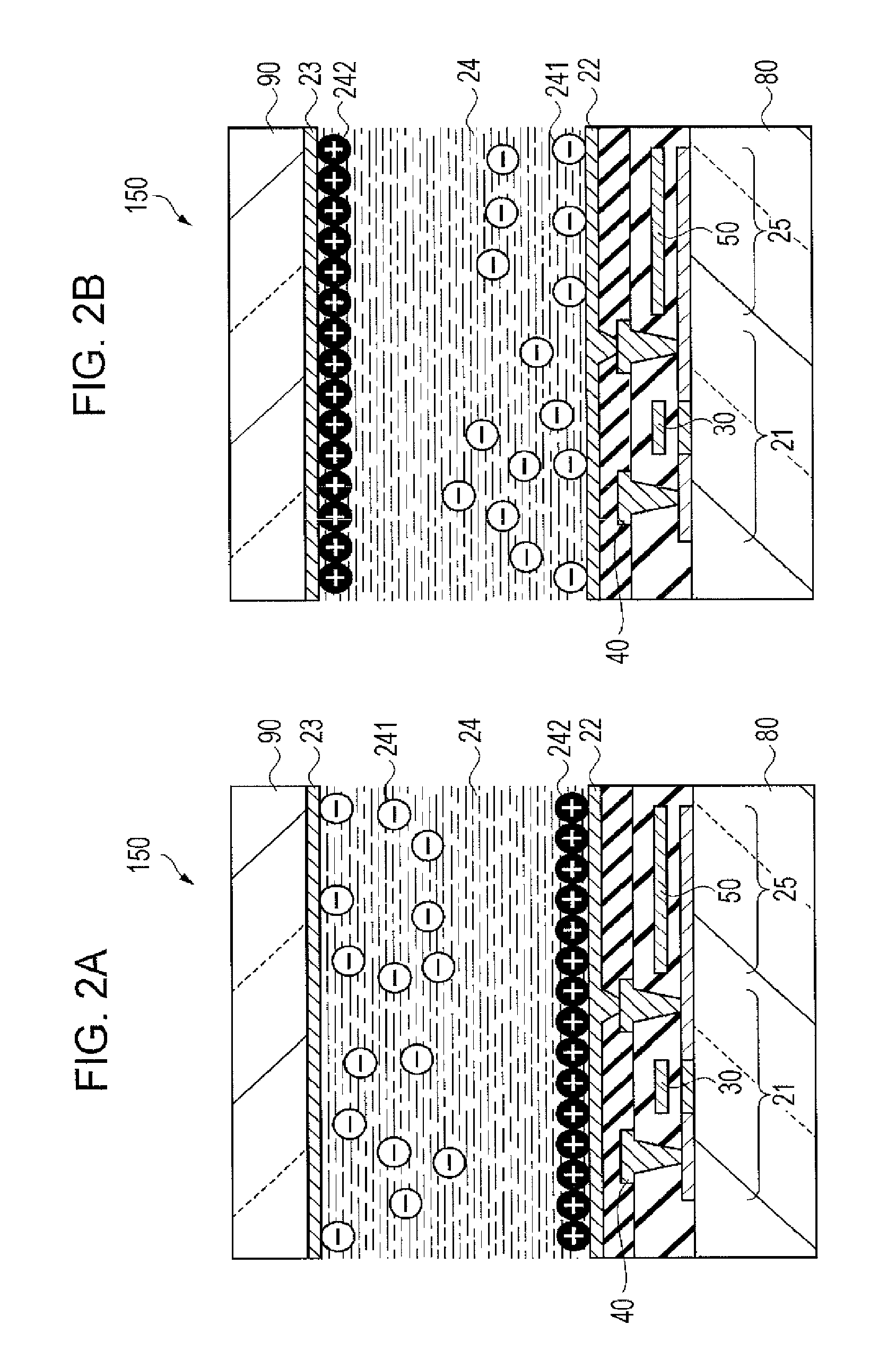Electrophoretic material, electrophoresis display device, and electronic apparatus
a display device and electrophoresis technology, applied in the field of electrophoresis display devices, can solve the problems of slow response speed with regard to applied voltage, difficult to be driven at a low voltage, and bad electrophoretic properties of electrophoretic materials in the related art, and achieve excellent image retention characteristic, fast response speed, and clean display
- Summary
- Abstract
- Description
- Claims
- Application Information
AI Technical Summary
Benefits of technology
Problems solved by technology
Method used
Image
Examples
first embodiment
Outline of Electronic Device
[0044]FIG. 1 is a perspective view illustrating an electronic apparatus according to a first embodiment. First, the outline of the electronic apparatus and an electrophoresis display device according to the first embodiment will be described with reference to FIG. 1.
[0045]As shown in FIG. 1, an electronic apparatus 100 according to the invention includes an interface to operate an electrophoresis display device 150 and the electronic apparatus 100. Specifically, the interface is an operation unit 120 and includes switches. The electrophoresis display device 150 is a display module which includes a display area 10. The display area 10 includes a plurality of pixels 20 (refer to FIG. 7A), and an image is displayed in the display area 10 in such a way that the pixels 20 are electrically controlled.
Structure of Electrophoresis Display Device
[0046]FIGS. 2A and 2B are cross-sectional views illustrating the electrophoresis display device according to the first e...
example
[0099]An example according to the first embodiment will be described below. In the electrophoretic material 24, the solvent is isoparaffin, the density ρ0 is 0.8 g / cm3, the weight concentration CW0 is 65 wt %, and the volume concentration CV0 is 90.3%. In the electrophoretic material 24, the first particles 241 are titanium oxide (TiO2), the density ρ1 is 4 g / cm3, the weight concentration CW1 is 30 wt %, and the first particle average radius a1=125 nm. Therefore, the volume concentration CV1 of the first particles 241 are 8.3%. In the electrophoretic material 24, the second particles 242 are titanium black, the density ρ2 is 4 g / cm3, the weight concentration CW2 is 5 wt %, the second particle average radius a2 is 50 nm. Therefore, the volume concentration CV2 of the second particles 242 is 1.4%. As a result, according to Equation 11, the volume fraction φ=9.7%. On the other hand, according to Equation 5, the number concentration CN1 of the first particles 241 is 1.02×1013 number / cm3...
second embodiment
Forms of Three Particle Groups
[0115]FIGS. 10A and 10B are cross-sectional views illustrating an electrophoresis display device according to a second embodiment. FIG. 10A illustrates second display, and FIG. 10B illustrates third display. Hereinafter, an electrophoretic material 24 and an electrophoresis display device 150 according to the second embodiment will be described. Also, the same reference numerals are used for the same components as in the first embodiment, and the description will not be repeated.
[0116]The second embodiment (FIGS. 10A and 10B) is different from the first embodiment (FIGS. 2A and 2B) in that there are three particle groups. The other configurations are almost the same as in the first embodiment. In the first embodiment (FIGS. 2A and 2B), there are two kinds of particles, that is, the first particles 241 and the second particles 242. However, in the second embodiment, there are three kinds of particles, that is, the first particles 241, the second particle...
PUM
| Property | Measurement | Unit |
|---|---|---|
| refractive index | aaaaa | aaaaa |
| particle average radius | aaaaa | aaaaa |
| particle average radius | aaaaa | aaaaa |
Abstract
Description
Claims
Application Information
 Login to View More
Login to View More - R&D
- Intellectual Property
- Life Sciences
- Materials
- Tech Scout
- Unparalleled Data Quality
- Higher Quality Content
- 60% Fewer Hallucinations
Browse by: Latest US Patents, China's latest patents, Technical Efficacy Thesaurus, Application Domain, Technology Topic, Popular Technical Reports.
© 2025 PatSnap. All rights reserved.Legal|Privacy policy|Modern Slavery Act Transparency Statement|Sitemap|About US| Contact US: help@patsnap.com



